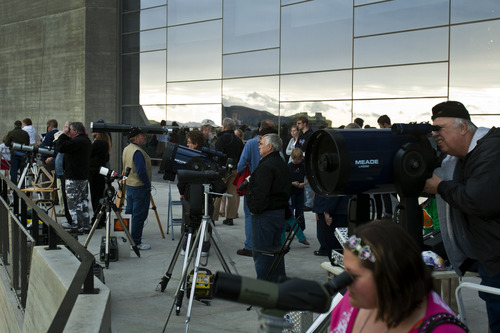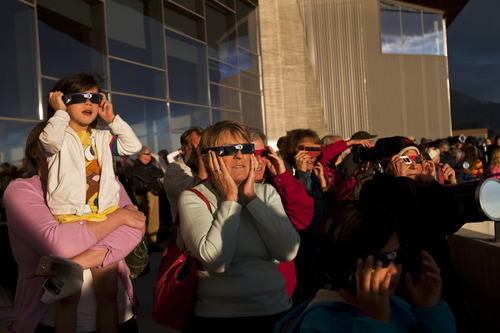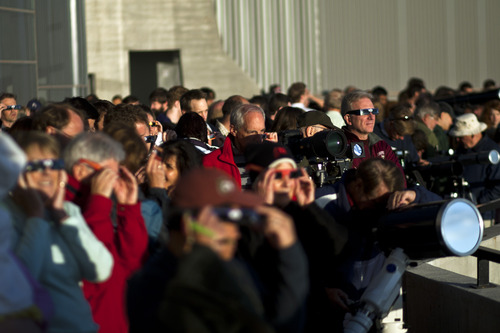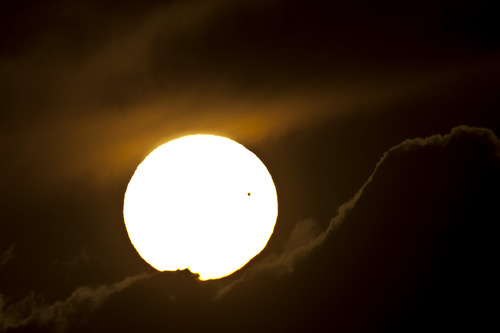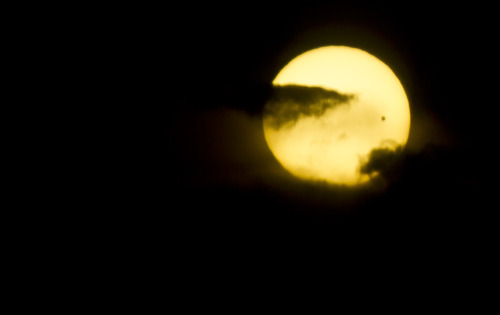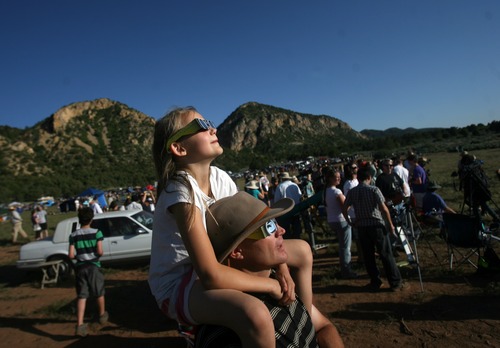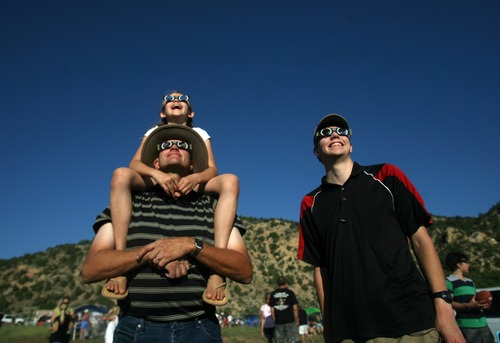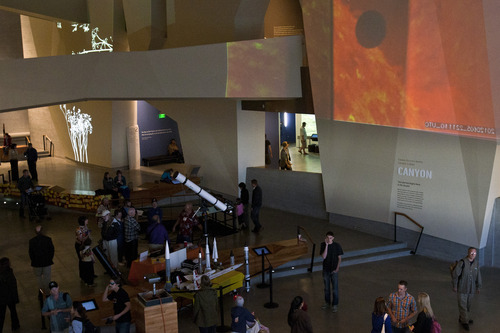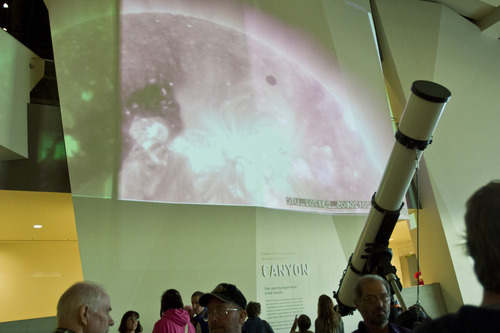This is an archived article that was published on sltrib.com in 2013, and information in the article may be outdated. It is provided only for personal research purposes and may not be reprinted.
In a year filled with a contentious presidential election, worry about the fiscal cliff and the abject horror of the school shooting in Newtown, Conn., looking beyond the planet Earth brought people together in the spirit of adventure, cooperation and wonder.
"In the midst of all this uncertainty and stomach acid, in terms of how much more we know about the universe around us, and our place in the solar system, it's been a hell of a year," said Seth Jarvis, director of the Clark Planetarium.
More than 10,000 people descended upon the tiny 300-resident Utah town of Kanarraville on May 20 to watch an annular solar eclipse, commonly known as a ring of fire. The crowd erupted into the chorus of Johnny Cash's famous song, while others hooted, hollered and cheered.
"I can still hear that roar that just went up as the eclipse hit its maximum," said Patrick Wiggins, NASA/JPL solar system ambassador to Utah. "It was like someone scoring the winning goal at the World Cup. I still get a little giddy thinking about it."
Some vendors in Kanarraville made tens of thousands of dollars selling solar glasses, commemorative T-shirts and other memorabilia.
"It was really a spectacular event for everyone involved," said Bonnie Char Hallman, public relations specialist for the Cedar City/Brianhead Tourism Bureau. "We were really thrilled to be a part of that moment in history."
Many who didn't travel to southern Utah to be on the center line of the eclipse still got a great partial view of the eclipse. The Clark Planetarium sold 30,000 pairs of special solar glasses to watch the eclipse safely.
"We were doing things that would make pirates blush in order to get extra glasses," Jarvis said. "It was complete madhouse-type stuff. We were making almost barter-like deals, meeting on street corners, passing back and forth checks and boxes of glasses."
The next annular eclipse visible from the United States won't happen until Oct. 14, 2023, according to Wiggins, though a total solar eclipse will occur Aug. 21, 2017, and it can be seen from Idaho.
Another solar event that happened in 2012 was the transit of Venus, where viewers could watch the small dot of the planet Venus cross in front of the face of the sun. It was a truly once-in-a-lifetime event. The last time such an event was visible from Utah was 1882; it won't be seen again from the Beehive State until 2125, decades after even Halley's Comet will have come and gone again.
While the weather didn't cooperate as well as it did for the eclipse, throngs of people still gathered at locations such as the Natural History Museum of Utah to take a glimpse.
Utahns again gathered on Sunday, Aug. 5, to watch the "Seven Minutes of Terror" as NASA engineers used a huge parachute, retrorockets and a lot of crossed fingers to land Curiosity, the largest-ever rover on Mars.
Todd Barber, a NASA/JPL propulsion engineer who was part of the team that was in charge of the landing, came to Utah to speak about it after its successful touchdown.
"It's been really great to see how fired up the state is about space science. The public is informed and engaged in what NASA does. It's great," Barber said. "There were lots of difficult stories throughout the year. I'm humbled to be part of one of the good news stories of the year."
Such large events helped clubs like the Salt Lake Astronomical Society, which saw its largest-ever membership numbers in 2012. The club usually averages about 200, and it hit 268, said Wiggins, who is the secretary-treasurer for the club.
The year, of course, was not without its losses to the astronomical community.
Sally Ride, the first U.S. woman in space, died July 23 at the age of 61 from pancreatic cancer.
"I think we always can do more than we think we can do and I think we can always do more than what society places on us," said Ann House, a NASA night sky ambassador and member of the Salt Lake Astronomical Society, at the time of Ride's death. "As individuals and especially women, we need to follow our dreams and keep fighting and follow your passion, just like Sally Ride did."
Neil Armstrong, the first man on the moon, died on Aug. 25 at the age of 82. The man who rarely talked about the mission and credited others for its success, captured the nation's imagination as he uttered his famous words from the farthest place a human had ever stepped.
"It was an inspiration. I'm sure he would probably not like being referred to as an inspiration, as he avoided the public so much," Wiggins said at the time of Armstrong's death. "But whether he likes it or not, he was an inspiration to a whole generation, and he will be missed."
Thousands of people gathered in different parts of the country to watch as the space shuttles, which were officially decommissioned in 2011, made their way on the backs of 747 jumbo jets to their final locations for display around the country.
Despite the saddening moments, space exploration continues to astound.
A recent image of Saturn taken by Cassini, a spacecraft orbiting the ringed planet, showed backlit rings and a gorgeous green glow from the planet. Cassini, which NASA's Barber continues to work on after 15 years of spaceflight, also sent back a high-resolution image of a Nile-like river system of methane and ethane on Saturn's moon Titan.
Voyager I, launched decades ago, is now on the edge of the solar system and is about to enter interstellar space. It's still sending back data, and is the farthest manmade object from the sun. NASA scientists have discovered water in places such as the poles of the moon and even the poles of Mercury.
"I share the same anxieties as everyone else, but we all should be happy and proud and very excited about this year in astronomy," Jarvis said. "If you're not astonished, you're not paying attention to all the cool stuff going on in space."
Twitter: @sheena5427


